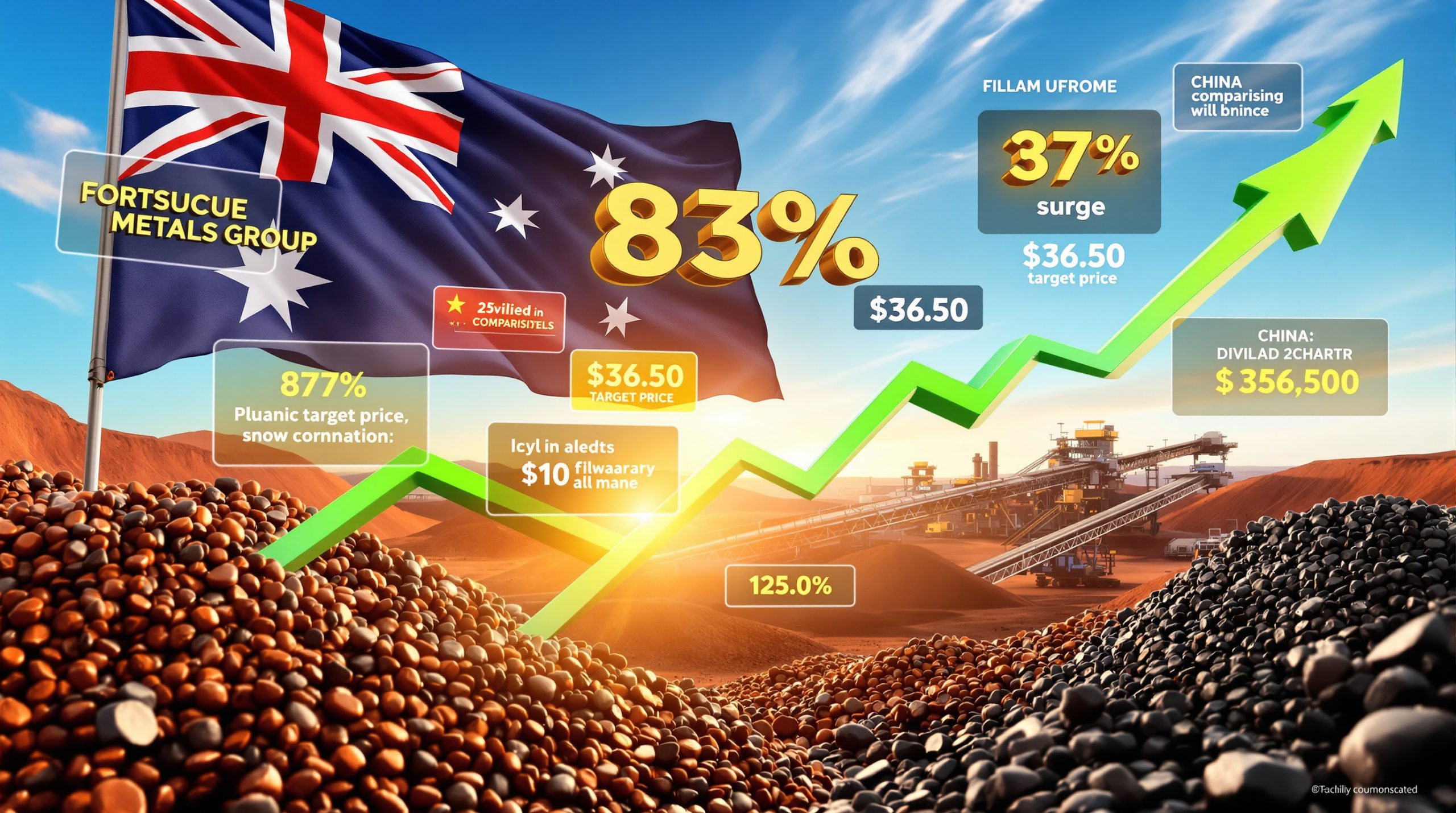What's Driving Citigroup's New Bullish Gold Outlook?
Citigroup has significantly revised its short-term gold price forecast upward, now predicting bullion will rally to record highs in the next three months. The bank's analysts, led by Max Layton, have adjusted their outlook to a range of $3,300 to $3,600 per ounce, marking a substantial increase from their June forecast that anticipated consolidation between $3,100 and $3,500.
"The market has been concerned about a US recession due to high interest rates for the past three years, buying gold to hedge the downside risks," noted Layton in a Bloomberg News report from August 4, 2025. "This fear has likely only increased over the past six months given President Trump's largest-in-a-century trade tariff agenda."
Economic Growth Concerns Trigger Forecast Revision
The primary catalyst behind Citigroup's bullish revision stems from mounting concerns about economic growth amid persistent inflationary pressures. These anxieties have intensified as investors evaluate the potential impact of restrictive monetary policies on business expansion and consumer spending.
Gold has historically served as a refuge during periods of economic uncertainty, with investors flocking to the precious metal when traditional growth-oriented assets face headwinds. The current environment of slowing growth indicators while inflation remains above target creates an ideal backdrop for gold's appeal as inflation hedge.
Tariff-Induced Inflation Pressures
A key factor driving Citi lifts gold short-term outlook on growth concerns is the expectation of higher-than-anticipated U.S. import tariffs. Analysts now project average tariffs exceeding the previously expected 15%, which could boost inflation and create additional economic headwinds, making gold more attractive as a hedge.
These tariff-induced pressures present a double-edged sword for markets:
- Increased consumer prices as import costs rise
- Supply chain disruptions affecting product availability
- Profit margin compression for companies unable to pass costs to consumers
- Reduced purchasing power for households facing higher prices
Gold tends to perform well in environments where inflation erodes the value of fiat currencies, positioning it as a potential beneficiary of trade policy shifts that amplify price pressures.
Recession Fears Intensify
Market concerns about a potential U.S. recession due to high interest rates have persisted for the past three years, with gold serving as a hedge against these downside risks. According to Citi analysts, these fears have likely intensified over the past six months, particularly in light of the proposed "largest-in-a-century trade tariff agenda."
The typical late-cycle economic indicators are increasingly flashing warning signals:
- Flattening or inverting yield curves
- Deteriorating consumer sentiment
- Softening labor market conditions
- Declining business investment
These factors collectively contribute to the environment that Citigroup believes will propel gold to new record highs in the coming months.
How Has Gold Performed in Recent Months?
Gold experienced a sharp rally in early 2025, reaching an all-time high above $3,500 per ounce in April. Since then, the precious metal has entered a consolidation phase as investors await fresh directional catalysts. This pattern aligns with Citi's previous forecast range of $3,150 to $3,500, which analysts noted "worked out well."
Record-Breaking Rally and Consolidation
The price action in gold markets has followed a familiar pattern often seen during periods of economic uncertainty:
- Initial breakout driven by safe-haven buying
- Acceleration phase as momentum traders join the trend
- Peak excitement as prices reach new records
- Consolidation period while the market digests gains
This consolidation phase is often necessary before the next significant move, allowing market participants to reassess fundamental drivers and positioning. Citigroup's revised forecast suggests this consolidation may soon give way to another gold market surge.
Comparison with Other Major Forecasts
Citigroup's revised outlook brings it in line with other bullish market participants, though some institutions remain even more optimistic about gold price forecast:
| Financial Institution | Gold Price Forecast | Timeframe |
|---|---|---|
| Citigroup | $3,300-$3,600 | Next 3 months |
| Goldman Sachs | Bullish outlook (specific figures not provided) | Near-term |
| Fidelity International | Potential $4,000 | By year-end 2025 |
This alignment among major financial institutions lends credibility to the bullish case, as multiple analysis teams with different methodologies arrive at similar conclusions regarding gold's trajectory.
What Factors Could Support Higher Gold Prices?
Multiple fundamental drivers currently align to support Citigroup's bullish outlook for gold prices. These factors extend beyond just economic concerns to include market dynamics, central bank policies, and geopolitical considerations.
Safe-Haven Demand During Economic Uncertainty
Gold typically performs well during periods of economic uncertainty and market volatility. The current environment of growth concerns, geopolitical tensions, and trade policy shifts creates ideal conditions for sustained safe-haven demand.
This safe-haven characteristic stems from several key attributes:
- Store of value with millennia of historical precedent
- Non-correlation with many traditional financial assets
- No counterparty risk unlike many financial instruments
- Universal recognition across cultures and markets
- Physical scarcity that limits supply growth
During periods of market stress, these qualities become particularly valuable to investors seeking portfolio protection.
Central Bank Purchasing Trends
Central banks globally have maintained strong gold purchasing activity, adding significant support to prices. This institutional demand represents a fundamental pillar for the gold market that could continue driving prices higher.
Market insight: Central bank gold buying has shifted from a primarily emerging market phenomenon to include developed economies seeking to diversify reserves away from traditional fiat currencies.
This diversification trend represents a structural shift in the gold market, creating a persistent source of demand that was largely absent during previous decades when central banks were net sellers of gold.
Currency Devaluation Hedge
With potential inflation pressures from tariffs and economic stimulus measures, gold's traditional role as a hedge against currency devaluation becomes increasingly relevant for investors seeking to protect purchasing power.
The mechanism works through several channels:
- Gold prices typically rise in local currency terms when that currency weakens
- Inflationary policies tend to reduce currency purchasing power over time
- Fiscal deficits often lead to currency depreciation in the long run
- Competitive currency devaluation can trigger "flights to safety"
As major economies continue expansionary fiscal policies while facing inflationary pressures, gold's appeal as a currency hedge may strengthen further, according to recent market analysis.
What Are the Long-Term Considerations for Gold Investors?
While Citigroup's near-term outlook appears decidedly bullish, their longer-term view introduces important nuances that investors should consider when formulating allocation strategies.
Potential 2026 Headwinds
Despite their bullish near-term outlook, Citi analysts maintain a more cautious stance on gold for 2026. They cite several potential headwinds:
- Possible end to the pause on U.S. hiring as investors gain more certainty on trade policies
- Economic stimulus effects from the "One Big Beautiful Bill Act"
- Potential normalization of monetary policy if inflation stabilizes
These factors could shift the macroeconomic landscape in ways less favorable to gold, potentially creating a more challenging environment for the precious metal as safe-haven demand moderates.
Investment Strategy Implications
Investors may need to consider a more tactical approach to gold allocation, potentially capitalizing on the expected near-term strength while remaining vigilant about longer-term positioning as economic conditions evolve.
Practical strategies might include:
- Core-satellite approach: Maintaining a core gold position for diversification while adjusting a tactical allocation based on market conditions
- Options strategies: Using options to establish upside exposure while limiting downside risk
- Mining equities: Considering gold mining companies with strong production profiles and disciplined capital allocation
- Regular rebalancing: Setting target allocations and systematically rebalancing as prices fluctuate
Disclaimer: These strategies involve financial risk and may not be suitable for all investors. Past performance does not guarantee future results. Consider consulting a financial advisor before implementing investment strategies.
Portfolio Diversification Benefits
Despite potential long-term headwinds, gold's role as a portfolio diversifier and hedge against extreme market events remains valid, suggesting that some allocation may be prudent regardless of price forecasts.
Historical data consistently shows that gold:
- Often moves independently of equity markets
- Can provide positive returns during equity market drawdowns
- Reduces overall portfolio volatility when included in moderate allocations
- Performs well during periods of heightened geopolitical tension
These characteristics make gold valuable beyond just price appreciation potential, supporting its inclusion in diversified portfolios even when price forecasts are uncertain.
How Might Tariffs Impact Gold and Other Commodities?
The tariff-centered trade policies expected to materialize represent a significant potential driver for commodity markets broadly, with particular implications for gold.
Inflationary Effects of Trade Policies
Higher tariffs typically lead to increased consumer prices as import costs rise. This inflationary pressure often benefits gold, which has historically performed well during periods of rising inflation.
The transmission mechanism works through several channels:
- Direct cost increases on imported goods
- Reduced competition allowing domestic producers to raise prices
- Supply chain adjustments adding costs throughout production processes
- Wage pressures as workers seek compensation for higher living costs
These inflationary forces can erode the real returns of fixed-income investments, enhancing gold's relative appeal as an inflation hedge.
Supply Chain Disruptions
Trade restrictions can disrupt global supply chains for various commodities, potentially creating supply constraints that support prices. For gold, this could manifest through impacts on mining operations or refining capacity.
Specific disruption vectors include:
- Increased costs for mining equipment and supplies
- Logistical complications affecting refined gold transport
- Regulatory hurdles for cross-border operations
- Labor market challenges in mining regions
While gold supply has historically been relatively inelastic, these factors could marginally constrain new production, potentially supporting prices at the margin.
Currency Market Implications
Trade tensions frequently impact currency markets, potentially weakening the U.S. dollar if economic growth is hampered. A weaker dollar typically supports gold prices by making the metal less expensive for holders of other currencies.
This relationship operates through:
- Purchasing power effects as gold becomes cheaper in non-dollar terms
- Portfolio reallocation as investors adjust currency exposures
- Interest rate expectations shifting based on economic impacts
- Safe-haven flows during periods of currency volatility
The interplay between trade policies, currency markets, and gold prices creates a complex but often supportive environment for the precious metal during periods of trade tension, as financial analysts have observed.
FAQs About Gold Price Forecasts
What factors most influence gold price forecasts?
Analysts typically consider multiple factors when formulating gold price predictions:
- Monetary policy expectations: Interest rate projections and central bank balance sheet trends
- Inflation outlooks: Both current readings and forward expectations
- Geopolitical risks: International tensions and political uncertainty
- Physical demand trends: Jewelry, investment, and industrial consumption patterns
- Mining supply projections: Production costs, new project pipelines, and reserve replacement
- Investor sentiment: Positioning in futures, ETFs, and other investment vehicles
The relative importance of these factors can shift over time, with different drivers taking precedence depending on the macroeconomic environment.
How reliable are gold price predictions?
Like all financial forecasts, gold price predictions are subject to significant uncertainty. They represent informed opinions based on current data and trends but cannot account for unforeseen events or market shifts.
Several limitations affect forecast reliability:
- Unpredictable events can dramatically shift market dynamics
- Behavioral factors often drive short-term price movements
- Assumption sensitivity means small changes in inputs can yield large forecast differences
- Time horizon challenges increase uncertainty for longer-term predictions
- Model limitations cannot capture all relevant variables
Important consideration: Financial forecasts should be viewed as probability distributions rather than precise predictions, with wider confidence intervals for longer time horizons.
How should investors use gold price forecasts in their decision-making?
Price forecasts should be considered as one input among many when making investment decisions. They can provide context and perspective but should be weighed alongside personal financial goals, risk tolerance, and broader portfolio strategy.
Effective approaches include:
- Consider multiple forecasts from different sources
- Understand the assumptions underlying each prediction
- Focus on directional guidance rather than precise price targets
- Incorporate contrarian views to challenge your thinking
- Maintain appropriate position sizing regardless of conviction level
This balanced approach helps prevent overreaction to any single forecast while still benefiting from the analytical insights they provide.
What is the relationship between interest rates and gold prices?
Gold typically has an inverse relationship with real interest rates (nominal rates minus inflation). When real rates are low or negative, the opportunity cost of holding non-yielding assets like gold decreases, often supporting higher prices.
This relationship exists because:
- Gold produces no income stream, making it less attractive when yield-bearing alternatives offer high real returns
- Low or negative real rates often coincide with monetary accommodation that can devalue currencies
- Inflation expectations tend to rise when real rates fall, enhancing gold's appeal as an inflation hedge
- Capital preservation becomes a greater priority in low real-rate environments
The current environment of elevated inflation alongside monetary tightening creates complex crosscurrents for this relationship, requiring nuanced analysis of the net impact on gold prices.
Navigating Gold's Outlook in an Uncertain Economic Landscape
The revised Citigroup forecast highlights the complex interplay of factors influencing gold prices, from macroeconomic concerns to trade policies and monetary expectations. While the near-term outlook appears supportive of higher prices, investors should remain mindful of potential longer-term headwinds as economic conditions evolve.
Gold's traditional role as a safe-haven asset and inflation hedge continues to underpin its appeal during periods of uncertainty, but strategic positioning may require adjustments as the economic landscape shifts. For investors considering gold allocations, the current environment of growth concerns and potential inflationary pressures creates a compelling case for the precious metal's near-term prospects.
The alignment of multiple bullish factors—including tariff-induced inflation expectations, persistent recession fears, and ongoing central bank purchases—provides the foundation for Citigroup's optimistic short-term outlook. However, their more cautious stance on 2026 underscores the importance of maintaining flexibility in investment positioning as conditions evolve.
Investment perspective: While forecasts provide valuable context, successful gold investing typically requires a disciplined approach that balances tactical opportunities with strategic portfolio construction principles, regardless of short-term price movements.
As with any investment decision, considerations beyond price forecasts—including liquidity needs, overall portfolio construction, and individual financial objectives—should guide allocation decisions. Gold's unique properties as both a commodity and monetary asset ensure it will remain an important consideration for investors navigating the challenges of an uncertain economic landscape.
Want to Catch the Next Major Mineral Discovery?
Discovery Alert's proprietary Discovery IQ model instantly notifies investors of significant ASX mineral discoveries, delivering real-time actionable insights before the broader market catches on. Explore why historic discoveries can generate substantial returns by visiting Discovery Alert's dedicated discoveries page and begin your 30-day free trial today.




